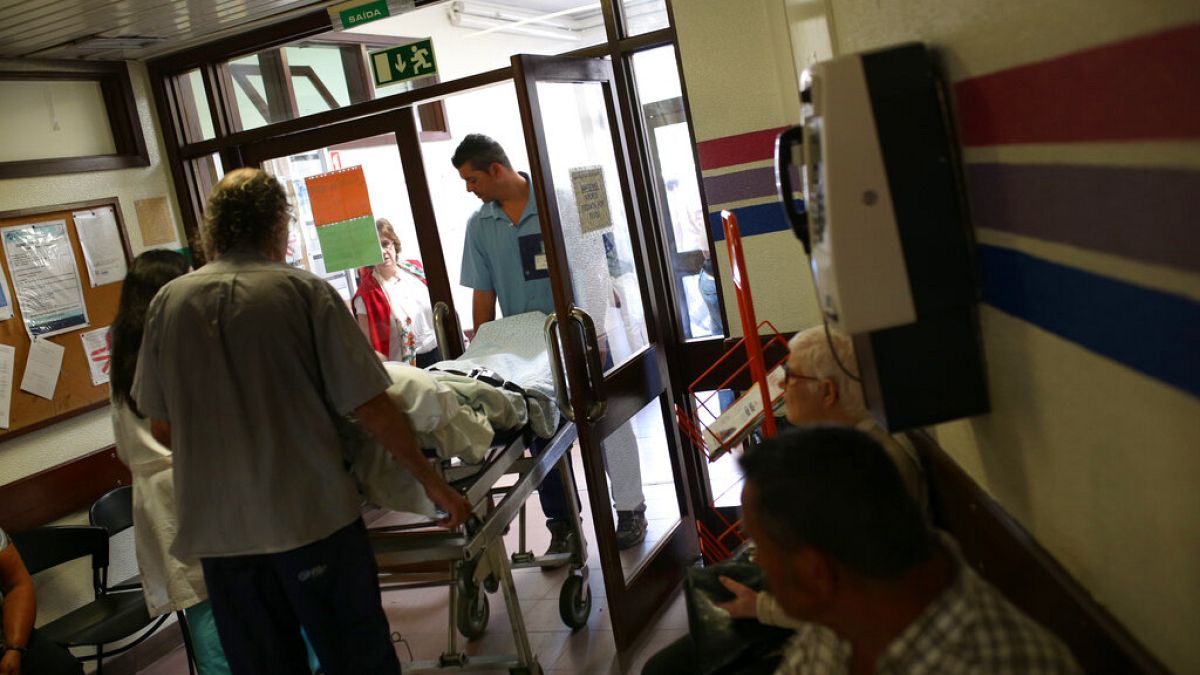Kendrick Nichols has a tough job.
One of Santa Fe Public Schools’ five attendance coaches, he’s responsible for regularly checking in with school staff, conducting home visits and connecting with students and their families to ensure they’re coming to school regularly.
How many students? Nichols and his colleagues are each responsible for caseloads of about 2,000 students across the district. Nichols’ coverage area encompasses Ramirez Thomas and Sweeney elementary schools, Nina Otero and Gonzales community schools and Ortiz Middle School.
There is no typical day at the office for Nichols.
“It’s really day-by-day,” he said.
The equation might seem simple: Regular school attendance equals more time spent learning.
And yet, kids across the U.S. haven’t come back to school regularly in the wake of the coronavirus pandemic, according to data collected by The Associated Press and Stanford University economist Thomas Dee.
New Mexico stands out in the data for its particularly poor performance. The state experienced the largest increase in chronic absenteeism rates in the country between the 2018-19 and 2022-23 school years, with the percentage of chronically absent students jumping by more than 20 points in that time period.
During the 2022-23 school year, nearly 40% of New Mexico students were considered chronically absent — or missed more than a tenth of their classes.
And though the state’s chronic absenteeism rate has started to show some improvement — it dipped by about 1.5% between the 2021-22 and 2022-23 school years — New Mexico maintains the third highest rate in the country, trailing only Alaska and the District of Columbia.
The question for lawmakers, state education officials, families and attendance coaches like Nichols: What’s to be done about it?
There is no easy fix. But Dee recommends hyper-local and relatively inexpensive approaches to the problem, bolstered by sufficient financial support from the state — a solution some New Mexico policymakers agree with.
“We and our children have all been through a lot, and it’s shaped where we are right now,” Dee said in an interview.
The difference a pandemic makes
In his more than 30 years in education, state Rep. Brian Baca, a Los Lunas Republican and deputy superintendent of Los Lunas Schools, has seen the excitement. He’s seen students rushing toward their classrooms, ready to learn.
Baca wonders: “Where do we lose that excitement?”
It dimmed, in large part, during the pandemic.
Some evidence suggests the nationwide chronic absenteeism problem — which experts note started before the pandemic — is linked to “norm erosion,” or the notion that values have shifted away from prioritizing regular attendance, Dee said.
“When families were in remote schooling, particularly for longer periods, they came to see less value in showing up to school,” he said.
Meanwhile, for many families, the pandemic worsened already-precarious financial circumstances and wrought sickness, mental health issues and death — all of which can contribute to poor school attendance, New Mexico Public Education Secretary Arsenio Romero said.
“Every family has a unique situation as to why there’s an issue like this,” he said. “What we’ve found is that there is still much trauma, really, coming out of the pandemic.”
There is another problem brewing, too, Dee said: Schools across the country are currently facing two major financial challenges.
As school enrollment declines across the country — including in Santa Fe — most districts have less state funding to work with. And federal pandemic relief aid — which offered up millions of dollars to school districts — is set to expire in September.
“Advice for schools to do multiple expensive things seems hopelessly miscalibrated to the moment,” Dee said.
Chronic absenteeism in Santa Fe
Santa Fe Public Schools’ attendance coaches are fighting against some tough odds.
Nichols, alongside fellow attendance coaches Evelyn Leger and Vicente Avila-Miramontes, said the city’s high cost of living, the lack of child care and more anxiety following the pandemic contribute to the district’s high rate of chronic absenteeism — which hovers around 50%, according to the latest figures from the state Public Education Department.
Oftentimes, Nichols said, parents don’t have the support they need — whether it’s child care for younger siblings or juggling multiple jobs — to get their kids to school.
“They just don’t have that support at home to kind of help them,” he said. “When that stress is weighing on them, their solution is, ‘We’ll just keep them home.’ “
In an ideal world, Santa Fe Public Schools would have a staff of more than 30 attendance coaches — one for each of the district’s 28 sites, plus a few extra at the high schools — to help connect families to the services they need, said Crystal Ybarra, the district’s chief equity and inclusion officer.
Instead, the district has just five — and funding those positions required some financial gymnastics during the latest round of budgeting.
The district expanded its attendance team using federal pandemic relief dollars. Starting this school year — with aid expiring — it had to absorb $2.8 million in program costs, a sum that included its attendance initiatives.
All of that means there’s no simple solution to Santa Fe’s chronic absenteeism problem.
“It really is a community effort. We need parents to be our partners. We need businesses to support our efforts,” Ybarra said.
‘Somebody does care’
Though there aren’t any quick fixes to chronic absenteeism, there are a few best practices to consider, Dee said.
The first step in solving the problem is understanding it better. Dee recommended school-by-school needs assessments to ensure aggregated data isn’t masking barriers to attendance unique to a specific school or neighborhood — like transportation or scheduling issues.
“My advice to school principals and district leaders would be: Don’t be too beguiled by the national conversation around these factors. Understand your local factors,” Dee said.
Baca argued that approach would be beneficial for kids in New Mexico.
“The needs of a kid out there in Silver City are different than the needs of a kid in Santa Fe. The needs of a kid out there in San Jon, N.M., are different than the kids in [Albuquerque Public Schools],” Baca said.
He continued, “We cannot do a one-size-fits-all, cookie-cutter approach to this education.”
But statewide policy changes can be helpful, too. Dee said career technical education options have been shown to reengage students, and the installation of full-service community schools — which can help address the problems underlying chronic absenteeism by connecting families to housing support, health care and other services — is worthy of discussion.
In recent years, New Mexico has funneled millions of dollars toward both initiatives. During the 2024 legislative session alone, lawmakers allotted $40 million for career technical education programs, plus an additional $8 million for community schools.
Career technical education is a sensical way to decrease rates of chronic absenteeism, said Rep. Joy Garratt, an Albuquerque Democrat and longtime educator.
“You have to start out with engaging, meaningful, hands-on education that makes kids want to come to school,” she said.
Meanwhile, Garratt added, the community school approach encourages staffing schools with counselors, social workers and other professionals to get at the root causes of chronic absenteeism and follow up with families.
Dee stressed that, as districts across the U.S. lose students and funding, policymakers shouldn’t forget about lower-tech options.
Informing families their students are absent with real-time text messages or postcards is a valuable tool in getting kids to class, verified by several research studies, Dee said.
Santa Fe Public Schools does this, with letters sent home automatically starting after four absences. In addition to offering grants for school districts to undertake new attendance initiatives, the Public Education Department is also planning a public information campaign to ensure families know just how important attendance is to future success.
“There appear to be misbeliefs among parents, where they don’t actually think their child is missing that much school or that the amount of school their child is missing doesn’t really matter,” Dee said.
“So just basic information that corrects those assumptions — let them know their child is missing a good deal of school and that it does matter — is really effective,” he added.
The other thing that makes a difference — educators’ experiences as well as Dee’s research — is a personal touch.
That’s why Nichols embarks on so many home visits.
He visits neighborhoods across the city, paying calls to families. And usually, Nichols said, home visits help — if nothing else, because they show someone is paying attention to that student.
“A lot of times, when you’re dealing with students who have these chronic absentee problems, their parents feel that the school gave up on them,” he said.
Nichols added, “It kind of gives them that reassurance that somebody does care.”
























/cdn.vox-cdn.com/uploads/chorus_asset/file/24982514/Quest_3_dock.jpg)





